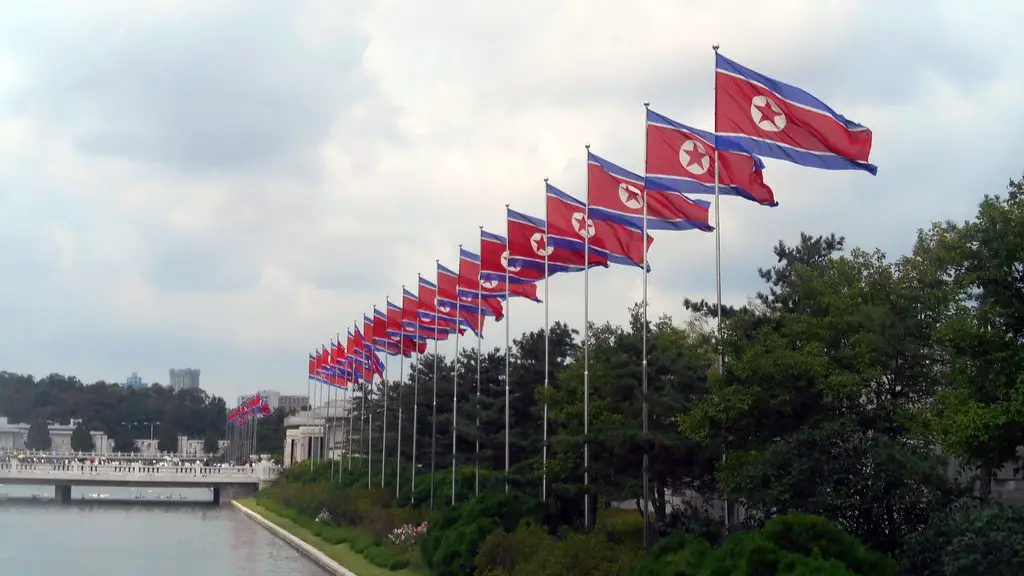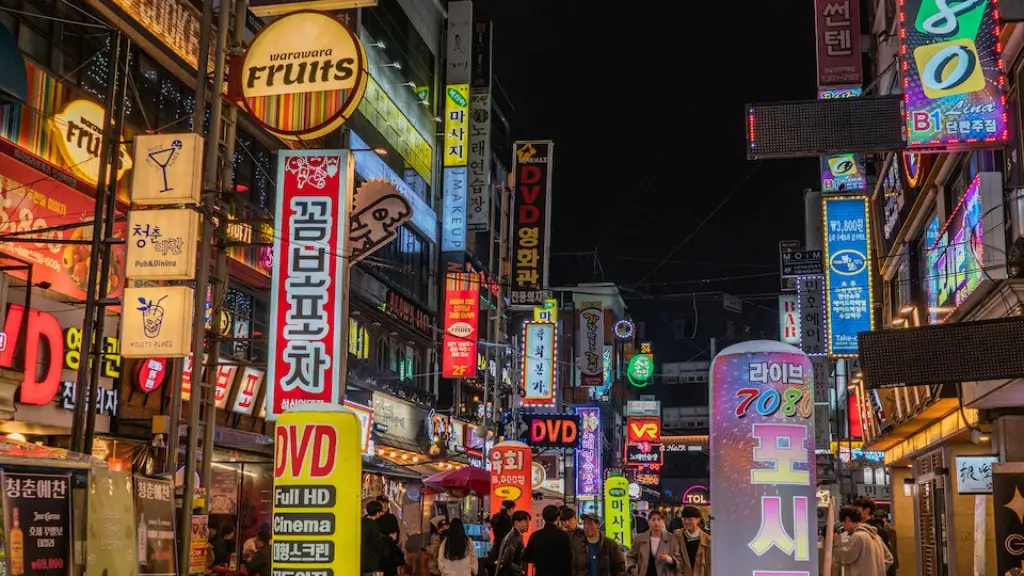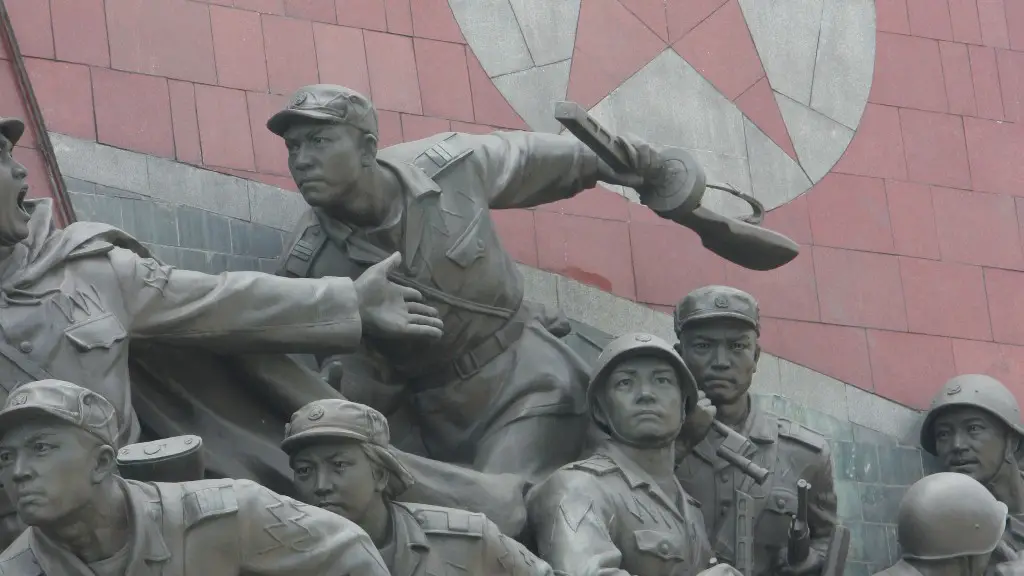What Estimated Size and Classification of Nuclear Weapons Does North Korea Have?
North Korea’s nuclear arsenal is one of the most complex strategic issues facing the international community. While North Korea’s nuclear capabilities are known, the exact size and classification of its nuclear weapons remain a matter of dispute and intense speculation. North Korea claims to possess nuclear weapons and has made a series of official announcements since its initial test-firing in 2006. It is alleged that North Korea has the capacity to build nuclear weapons ranging from intercontinental ballistic missiles (ICBMs) to medium-range missiles with nuclear warheads.
North Korea’s Nuclear Weapons Program
The nuclear weapons program in North Korea is believed to have started in the late 1960s during the reign of the Soviet Union. Since then, the nation has steadily grown its nuclear program, and is widely believed to possess weapons of mass destruction. In the early 1980s, North Korea joined the Treaty on the Non-Proliferation Of Nuclear Weapons (NPT), which allowed it access to nuclear fuel and technology, further fueling its nuclear ambitions.
Although the country has made several attempts to curb its nuclear weapons program, including freezing production for several years, and placing a ban on the sale of nuclear material, all efforts have failed. In 2004, North Korea had a uranium enrichment program and declared itself a nuclear weapon state. North Korea is suspected to have the stock of weapons and materials needed to build atomic bombs; some estimates suggest that it possesses anywhere from one to five bombs.
Weapons Classification
North Korea is believed to have nuclear weapons with varying levels of destructive capability. This includes warheads that have a range of 25 to 400 kilometers, depending on their configuration. These weapons are believed to include air-to-surface missiles, cruise missiles, and land-based missiles. Estimates of the size of its nuclear arsenal range from 20 to 60 warheads.
The weapons that North Korea is said to have access to vary in capabilities. Some warheads, though capable of providing a overwhelming destructive power, might not be able to hit the target in their intended political message. Other highly destructive warheads may be able to target an enemy nation, but are not powerful enough to cause catastrophic damage. These weapons may be more aligned with North Korea’s propaganda efforts than an actual attempt to cause destruction at a massive scale.
North Korea’s Nuclear Goals
North Korea’s nuclear program is meant to increase its international influence, both politically and militarily. Its development of the nuclear arsenal is seen as a way to demonstrate its military might and gain the attention of the international community. North Korea has stated that its nuclear weapons are for defensive purposes, and has shown a desire to reduce tensions through dialogue and negotiations.
However, due to the size and scope of its nuclear arsenal, and its refusal to give up its nuclear capabilities, many nations feared that North Korea would be used as a tool of international aggression. Ultimately, the nuclear arsenal was seen as a deterrence that would ensure North Korea could never be invaded.
International Pressure
The international community has taken steps to limit North Korea’s nuclear weapons program. The UN Security Council has imposed a range of sanctions to try and curb the nation’s nuclear ambitions. There has also been intense diplomatic pressure from the United States, China, and other countries to denuclearize.
Despite this pressure, North Korea has refused to give up nuclear weapons, claiming its right to self-defense and security. North Korea has also accused the international community of “double standards” in its non-proliferation efforts, pointing out that other countries such as the United States have not destroyed their own nuclear weapons.
Political Implications
The nuclear arsenal of North Korea is seen to have the potential to cause a major political upheaval in the East Asian region. It is feared that the nation’s nuclear weapons could be used in a political weapon to threaten its neighbors, or even to force regional countries to cooperate. This could potentially lead to an arms race in the region, as nations develop their own capabilities in order to match North Korea’s nuclear capabilities.
The nuclear arsenal also impacts other nations’ policy towards North Korea. Many countries have adopted a cautious approach towards the nation, unwilling to engage in dialogue for fear of the nation’s nuclear arsenal. This has been especially true for countries such as South Korea and the United States, who have adopted a policy of deterrence in response to North Korea’s nuclear capabilities.
Economic and Security Impact
The presence of North Korea’s nuclear arsenal in the region also has an economic impact. Nations in the region are investing heavily in defense capabilities to counter the threat of a nuclear attack by North Korea. This has a significant impact on the economies of these countries, with military spending taking a large portion of the nation’s budget.
The security of the region is also a major concern, with the nuclear arsenal of North Korea seen as one of the most serious threats. The arsenal has the potential to cause massive destruction, and could potentially trigger a global conflict.
Future of North Korea’s Nuclear Arsenal
The future of North Korea’s nuclear arsenal is difficult to predict. The nation has stated that it is willing to negotiate with foreign powers over the nuclear issue, but has been unwilling to give up its nuclear capabilities. It is likely that the nation’s nuclear arsenal will continue to be a source of concern, with the government’s refusal to denuclearize meaning that it poses a risk to international security.
International Collaboration
The international community has been in talks to create an effective mechanism to limit North Korea’s nuclear capabilities. Different proposals have been made, from increased international sanctions to military action, but there is still no clear consensus on how to solve the issue.
In the absence of a concrete strategy, the international community has focused on encouraging North Korea to engage in open dialogue and negotiations on disarmament. Diplomats are also trying to build trust with the North Korean government, hoping that through mutual understanding, the region can move towards nuclear disarmament and peace.
Tensions with the US
The nuclear issue has further complicated North Korea’s relationship with the United States. Despite open dialogue between the two countries, the US has continued to call for the complete disarmament of North Korea’s nuclear arsenal.
The US administration has also taken a hardline stance on the nuclear issue, and has warned that it is prepared to use force if North Korea does not give up its nuclear weapons. In response, North Korea has continued to develop its nuclear capabilities and strengthen its deterrence, leading to a tense stand-off between the two countries.
Peaceful Resolution
Ultimately, the situation on the Korean peninsula remains fluid, with both sides unwilling to give up their nuclear capabilities. In the short term, it remains unlikely that North Korea will denuclearize. However, there is still the possibility of diplomatic solutions and a peaceful resolution to the conflict.
The international community must continue to engage North Korea in an effort to curb its nuclear ambitions, while creating an environment conducive for peaceful negotiations over the issue. Everything from increased sanctions to incentives must be considered, in an effort to find a way to peacefully resolve the nuclear issue.


